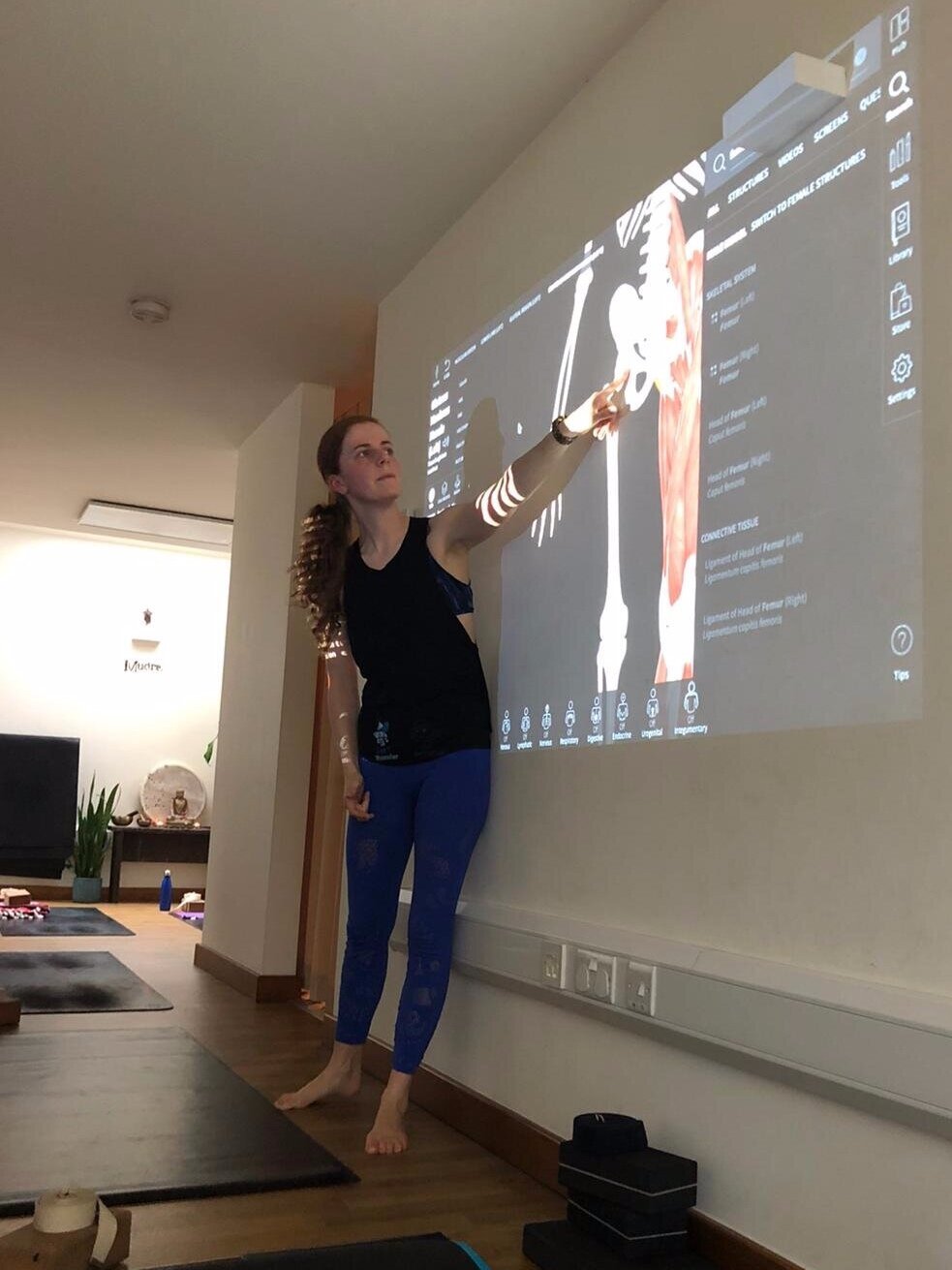Yoga, anatomy, asana and alignment
Olivia Marley
Teaching anatomy at Mudra Yoga in London
I teach yoga classes, and I also separately teach anatomy classes to yoga teachers or people training to become yoga teachers. Those classes are different from each other even though they overlap. Here are my thoughts on anatomy and its place in yoga.
Yoga is a practice of self-discovery and transformation. A key tenet of this practice is increasing awareness of our unconscious patterns of behaviour (in Sanskrit called samskaras) and replacing those that do not serve us with different, conscious patterns in order to prevent future pain from manifesting (as instructed by Patanjali’s Yoga Sutra 2 verse 16). The modern, westernized approach to yoga centres asana as its main tool but that is not the only tool at our disposal as yoga practitioners (think also of mantra, pranayama, kriya etc). Since asana is a physical tool involving the body it is useful to know about anatomy and physiology as a way of:
deepening our self-knowledge
understanding experiences that we may have during an asana practice
potentially limiting the likelihood of any injury arising (since any movement discipline can give rise to injury…. But we also know that as a general rule your body wants to move and is much happier when it does!).
Since each person’s body is different, the way they express and experience each pose will be different. No two people will look or feel the same in triangle pose, or warrior 2. So there won’t be any alignment cues that any teacher can give that will work for every single person’s body. But these types of cues can help you:
learn to observe unconscious patterns in your body (eg do I normally lean all my weight on to the outside of my front foot in trikonasana/ triangle pose?)
learn to potentially replace them with conscious patterns (eg can I instead keep my weight centred on that front foot by anchoring down through my big toe and engaging the outer arch of my foot?)
learn more about your body and how its different parts work, both separately and as part of the whole system (eg when I engage the outer arch of my foot can I feel how that also switches on tissues around my ankle, up my outer shin and all the way up to outer hip?)
We can also relate this theme of replacing old patterns with new, more useful ones to overuse injuries that come up in the body and will only be solved by changing what we’re doing.
This is how anatomical knowledge can serve the practice of yoga. Movement and making shapes are in no way the entirety of what this vast and ancient discipline can offer or the end goal in themselves.
Yoga is an ancient practice that has been handed down from teacher to students over generations. I’ve had many wonderful teachers, some of whom teach yoga and some don’t. I’ve been guided in forming these views by two of my main yoga teachers, Jason Crandell and Bridget Woods Kramer.
